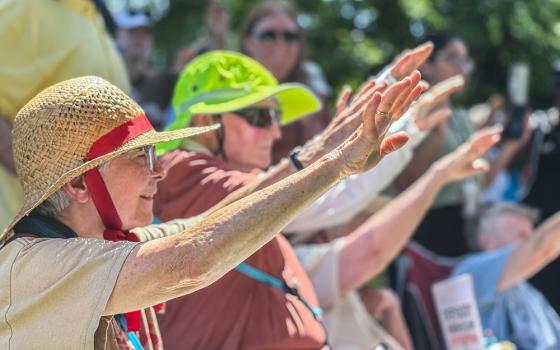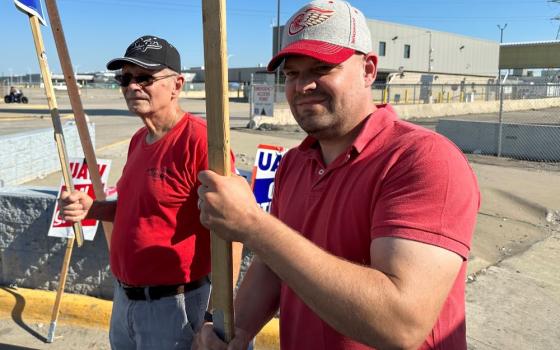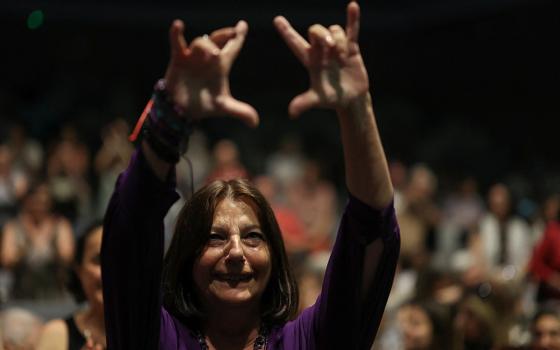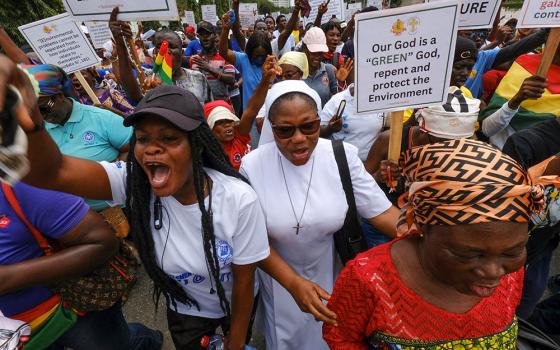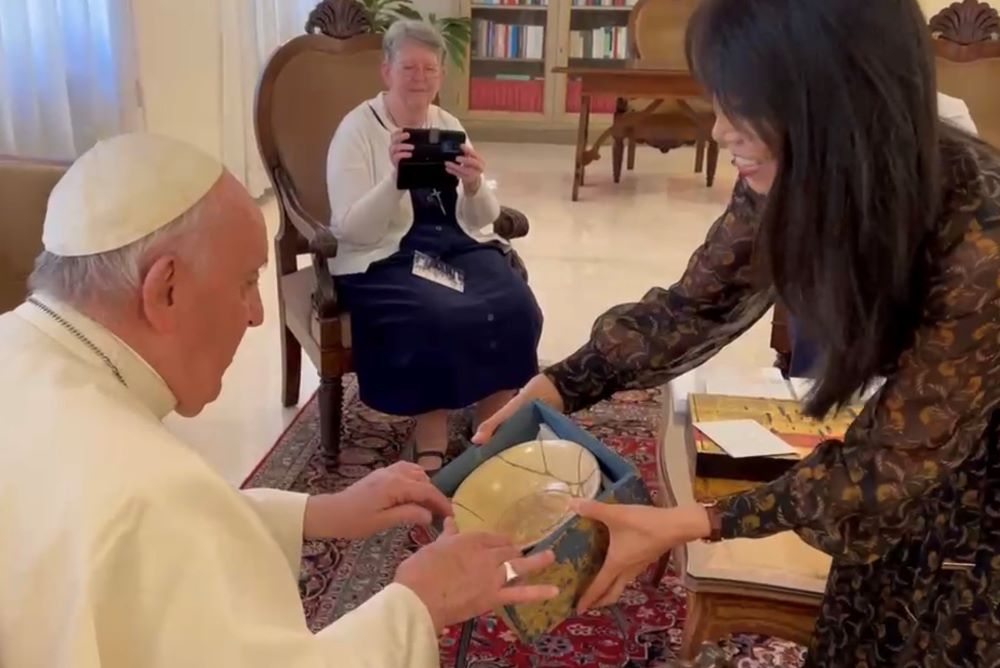
Haejin Shim Fujimura presents Pope Francis with a 15th century kintsugi bowl by on Nov. 8. (Courtesy of Haejin Shim Fujimura)
What began as a private message on Twitter resulted in a private meeting with Pope Francis.
It was seven years ago when Servant of God's Love Sr. Dorcee Clarey reached out to the American artist Makoto Fujimura after being inspired by one of his paintings. Clarey and Fujimura, who has written extensively on the intersection of faith and art, soon became pen pals, with the artist treasuring the prayers of a religious sister living in Michigan whom he'd never met.
There was one form of art that Fujimura specialized in that Clarey found especially meaningful: kintsugi. The ancient Japanese tradition repairs broken vessels with gold — not hiding their past damage but incorporating it into the history of the piece, with the finest of treatments.
"Kintsugi does not just 'fix' or repair a broken vessel; rather, the technique makes the broken pottery even more beautiful than the original," writes Fujimura in his 2020 book Art and Faith: A Theology of Making. "Christ came not to 'fix' us, not just to restore, but to make us a new creation."
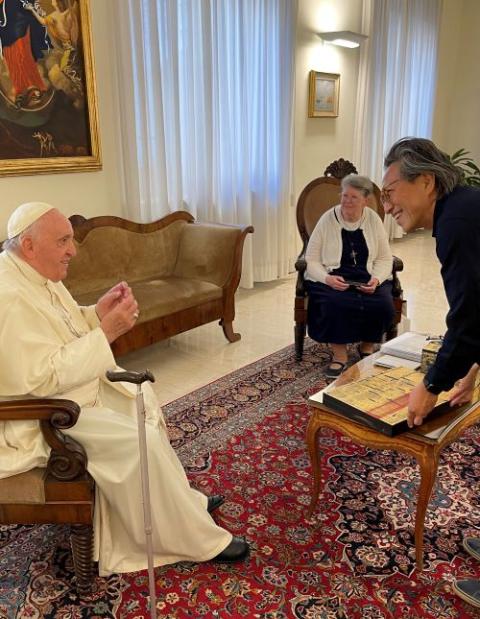
Artist Makoto Fujimura introduces his work to Pope Francis on Nov. 8. (Courtesy of Haejin Shim Fujimura)
Clarey and Fujimura corresponded for years, but in 2020 Clarey wrote with a special request.
Pope Francis' book, Let Us Dream: The Path to a Better Future, had just been released, and Clarey believed a particular passage in it captured the concept of kintsugi.
"You have to go to the edges of existence if you want to see the world as it is. I've always thought that the world looks clearer from the periphery, but in these last seven years as Pope, it really hit home," writes Francis. "You have to make for the margins to find a new future. When God wanted to regenerate creation, He chose to go to the margins — to places of sin and misery, of exclusion and suffering, of illness and solitude — because they were also places of possibility: 'where sin increased, grace abounded all the more.' "
"I have [a] wild thought which I ask that you pray about," Clarey wrote in an email to Fujimura. "I think Pope Francis would love the idea of kintsugi. Perhaps you could send him a piece with an explanation of kintsugi."
Fujimura showed the email to his wife, Haejin Shim Fujimura, and they instantly agreed to do so.
'God reaches out to all of us in our brokenness and glues it all together with his gold.'
—Sr. Dorcee Clarey
As a lawyer and advocate for victims of human trafficking, Shim Fujimura had used the image of kintsugi to capture the essence of her own work, even before she met Fujimura.
"I want to restore that beauty that has been broken," Shim Fujimura told NCR.
That mission led her to found the nonprofit Embers International, which cares for nearly 100 children in India born from human trafficking.
"Although this is one of the darkest, most broken places in the world, there are lives born into this place, which means there is hope," she said.
Because Pope Francis has continually elevated the fight against human trafficking — labeling it "a crime against humanity" — the Fujimuras believed the pope would find even greater appreciation for kintsugi.
"Where do we send it?" they asked Clarey.
She hadn't a clue and began asking around, until one friend countered with a better idea: Forget sending it, why not present it in person?
On the afternoon of Nov. 8, the Fujimuras, joined by Clarey and another member of her community, Sr. Christina Frey, headed into the pope's private residence at Casa Santa Marta to do just that.
There, they presented the pope the kintsugi — a 15th century Korean noodle bowl that had been mended with gold lacquer in Japan — in a box painted by Fujimura, while sharing stories about artwork, the Fujimuras' commitment to battling human trafficking and caring for its victims and Clarey and Frey's ministry in Flint, Michigan, an economically depressed community still reeling from a water contamination crisis.
Advertisement
In the same manner the kintsugi bowl represented an item that had experienced trauma, so too have the trafficking victims and the individuals in Flint. In their own respective ways, they told the pope, they had been inspired by his emphasis on mercy to aid their own work in helping to mend communities back together.
"God reaches out to all of us in our brokenness and glues it all together with his gold," Clarey told NCR on Nov. 9, the day after meeting with the pope.
"For us we are all kintsugi," Shim Fujimura added. "In turn, we are to pour ourselves into our neighbors lives into their fractures like the bowl that needed lacquer."
After spending about half an hour with the group, Fujimura recalled, Francis blessed them and encouraged them to continue their work, offering them a final benediction.
"You are all creators of good," he said.


